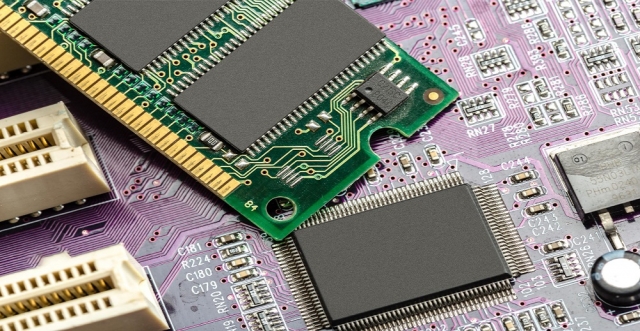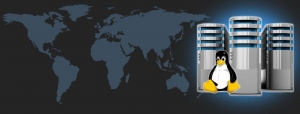Introduction
NAND flash memory, a type of non-volatile storage technology, has become a cornerstone of modern digital devices, powering everything from smartphones and laptops to data centers and enterprise storage solutions. Its ability to retain data without power and its scalable architecture make it an indispensable component in the digital age. This blog post delves into the current state of the NAND flash memory market, exploring its trends, challenges, and future prospects.
The Current State of the NAND Flash Market
The NAND flash memory market is experiencing robust growth driven by several key factors. The proliferation of Internet of Things (IoT) devices, the rising demand for high-performance computing, and the explosion of data generation across industries have all contributed to this surge.
Key Trends Shaping the Market
-
Technological Advancements in NAND Flash Memory:
- 3D NAND Technology: One of the most significant advancements in recent years is the development and adoption of 3D NAND technology. Unlike traditional planar NAND, which arranges memory cells in a single layer, 3D NAND stacks cells vertically, allowing for greater density and improved performance. This has enabled manufacturers to produce higher-capacity storage solutions without significantly increasing physical size.
- QLC (Quad-Level Cell) NAND: QLC NAND stores four bits per cell, offering higher storage densities compared to single-level cell (SLC), multi-level cell (MLC), and triple-level cell (TLC) NAND. While QLC provides cost advantages, it also presents challenges in terms of endurance and reliability, prompting ongoing research to enhance its durability.
-
Shift Towards High-Performance Computing:
- The demand for high-performance computing (HPC) in applications such as artificial intelligence (AI), machine learning, and big data analytics is driving the need for faster and more reliable NAND flash memory. Enterprise-grade SSDs (Solid State Drives) equipped with NAND flash are increasingly being used in data centers to meet these requirements, offering lower latency and higher throughput compared to traditional hard disk drives (HDDs).
-
Adoption in Emerging Markets:
- Emerging markets such as autonomous vehicles, smart cities, and wearable technology are also fueling the demand for NAND flash memory. Autonomous vehicles, for example, require substantial storage capabilities to process and store data from various sensors and cameras in real time. Similarly, smart city infrastructures rely on NAND flash to handle large volumes of data generated by interconnected devices and systems.
Challenges Facing the NAND Flash Market
Despite its promising growth, the NAND flash memory market faces several challenges that could impact its trajectory:
-
Price Volatility:
- The NAND flash market has historically been characterized by significant price fluctuations due to the cyclical nature of supply and demand. Factors such as production yield issues, geopolitical tensions, and natural disasters can disrupt supply chains and cause price instability. Manufacturers must navigate these fluctuations while maintaining profitability and competitiveness.
-
Scaling Limitations:
- As NAND flash memory cells continue to shrink in size to achieve higher densities, they encounter physical limitations that can affect performance and reliability. Issues such as electron leakage and increased susceptibility to interference are becoming more pronounced, necessitating innovative solutions to maintain the integrity and efficiency of smaller cells.
-
Environmental Concerns:
- The production of NAND flash memory involves the use of hazardous chemicals and substantial energy consumption, raising environmental concerns. As the market grows, there is increasing pressure on manufacturers to adopt sustainable practices and reduce their carbon footprint. This includes developing eco-friendly manufacturing processes and investing in recycling technologies.
Future Prospects of the NAND Flash Market
Looking ahead, the NAND flash memory market is poised for continued expansion and innovation. Several key developments are expected to shape its future:
-
Advancements in 3D NAND Technology:
- The evolution of 3D NAND technology is likely to continue, with manufacturers exploring ways to increase the number of layers and enhance cell architecture. This will enable even higher storage capacities and improved performance, catering to the growing demands of data-intensive applications.
-
Integration with Emerging Technologies:
- NAND flash memory is set to play a crucial role in the development of emerging technologies such as quantum computing, edge computing, and advanced AI systems. Its ability to provide fast, reliable, and high-capacity storage will be essential in supporting the processing and analysis of vast amounts of data in real-time environments.
-
Focus on Data Security:
- With the increasing importance of data security and privacy, there will be a greater emphasis on incorporating advanced encryption and protection mechanisms within NAND flash memory solutions. This will be particularly critical in sectors such as finance, healthcare, and government, where sensitive data must be safeguarded against cyber threats.
-
Sustainability Initiatives:
- As environmental concerns gain prominence, the NAND flash memory industry is expected to adopt more sustainable practices. This includes the development of energy-efficient manufacturing processes, the use of recycled materials, and the implementation of green technologies to minimize the environmental impact of production.
Conclusion
The NAND flash memory market is a dynamic and rapidly evolving sector that plays a vital role in the digital age. Technological advancements, growing demand for high-performance computing, and adoption in emerging markets are driving its growth. However, challenges such as price volatility, scaling limitations, and environmental concerns must be addressed to ensure sustainable development. Looking to the future, continued innovation, integration with emerging technologies, and a focus on data security and sustainability will be key to unlocking the full potential of NAND flash memory. As the digital landscape continues to expand, NAND flash memory will remain a critical enabler of progress and innovation, shaping the future of technology in profound ways.






